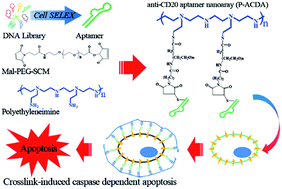Monoclonal antibodies (mAbs) are antibodies made by clones of immune cells derived from a common parent cell. These synthesized molecules have achieved widespread clinical utility in the treatment of cancer owing to their high degree of specificity to proteins present on the surface of cancer cells, lower toxicity compared to other classes of targeted therapies, and improved treatment outcomes among patients with advanced stage cancer.
Non-Hodgkin Lymphoma (NHL) is a type of cancer where a subtype of immune cells called B-cells exhibit unrestrained cell division. The abnormal B-cell, now called a malignant B-cell, produces more abnormal cells like it. CD20 is a protein present on the surface of malignant B-cells. Rituximab (RTX) is used to treat patients with NHL because it can bind CD20 and consequently trigger cell death.
To address the growing need for CD20 targeted therapeutics, Cong and colleagues at the Department of Laboratory Diagnosis/Thoracic Surgery, Changhai Hospital Affiliated to The Second Military Medical University, Shanghai, China, developed molecules called aptamers that can bind to CD20 with greater specificity and strength compared to RTX.

Graphical Abstract
Aptamers are molecules made up of single stranded DNA that form complex 3D structures and can bind to target proteins, analogous to mAbs. The team used a method called cell-SELEX to retrieve an enriched pool of highly specific CD20-binding aptamers starting with their initial aptamer library. The aptamers used in the study were obtained after 15 rounds of selective refinement.
The study finds that Anti-CD20 DNA Aptamer (ACDA) can bind surface CD20 in NHL cells with greater strength compared to RTX. In the past, experiments have shown that cross-linking surface CD20 with mAbs (i.e. extracellular cross-linking) is a potent method of inducing cell death. A major limitation is that extracellular cross-linking cannot be realized in vivo. Cong et al. develop a method to link two ACDA molecules with polyethyleneimine (PEI) linker’, forming a molecular bridge – the P-ACDA – capable of spanning the distance between and cross-linking two CD20 molecules. The study finds that P-ACDA led to substantially more cell death compared to ACDA.
Aptamers as a novel class of targeted therapies are expected to outperform mAbs because they do not evoke the body’s endogenous immune response (i.e. less immunogenic) and therefore in good compliance with current FDA recommendations. They are also easier to store since they are stable across a broad temperature range ,less expensive to manufacture, show consistency between production batches and can bind to both protein as well as non-protein targets. For these reasons, the clinical relevance of aptamers in treating HNL and potentially other cancers must be watched closely in the years to come.
Read the full article here:
Cong Wu, Wei Wan, Ji Zhua, Hai Jina, Tiejun Zhao and Huafei Li










